Two charges Q1 and Q2 coulombs are shown in figure. A third charge Q3 coulombs is moved from points R to S along a circular path. Change in potential energy of the charge is -
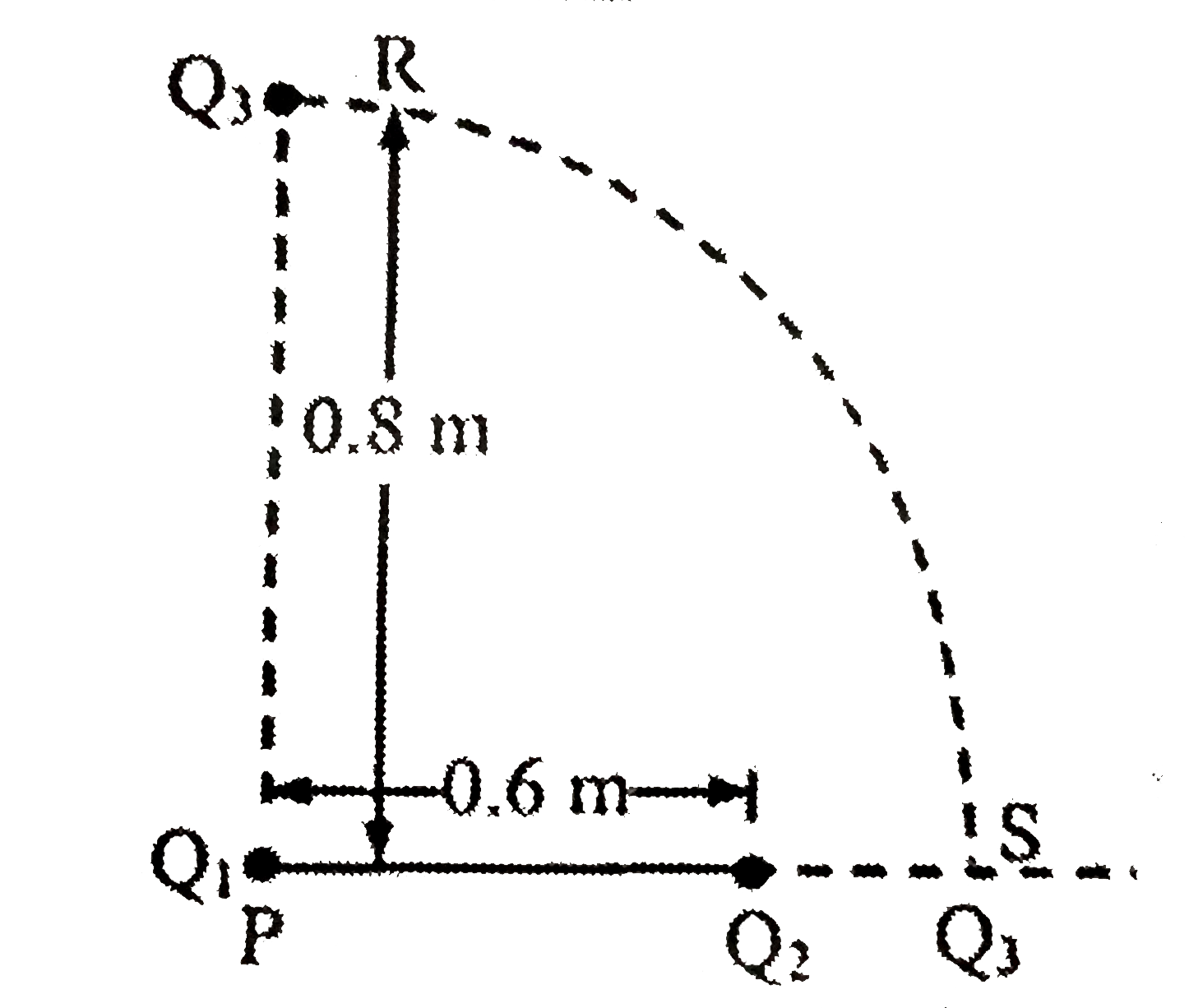
kQ1Q2Q3
4kQ1Q2
4kQ2Q3
23kQ2Q3
The correct Answer is:C
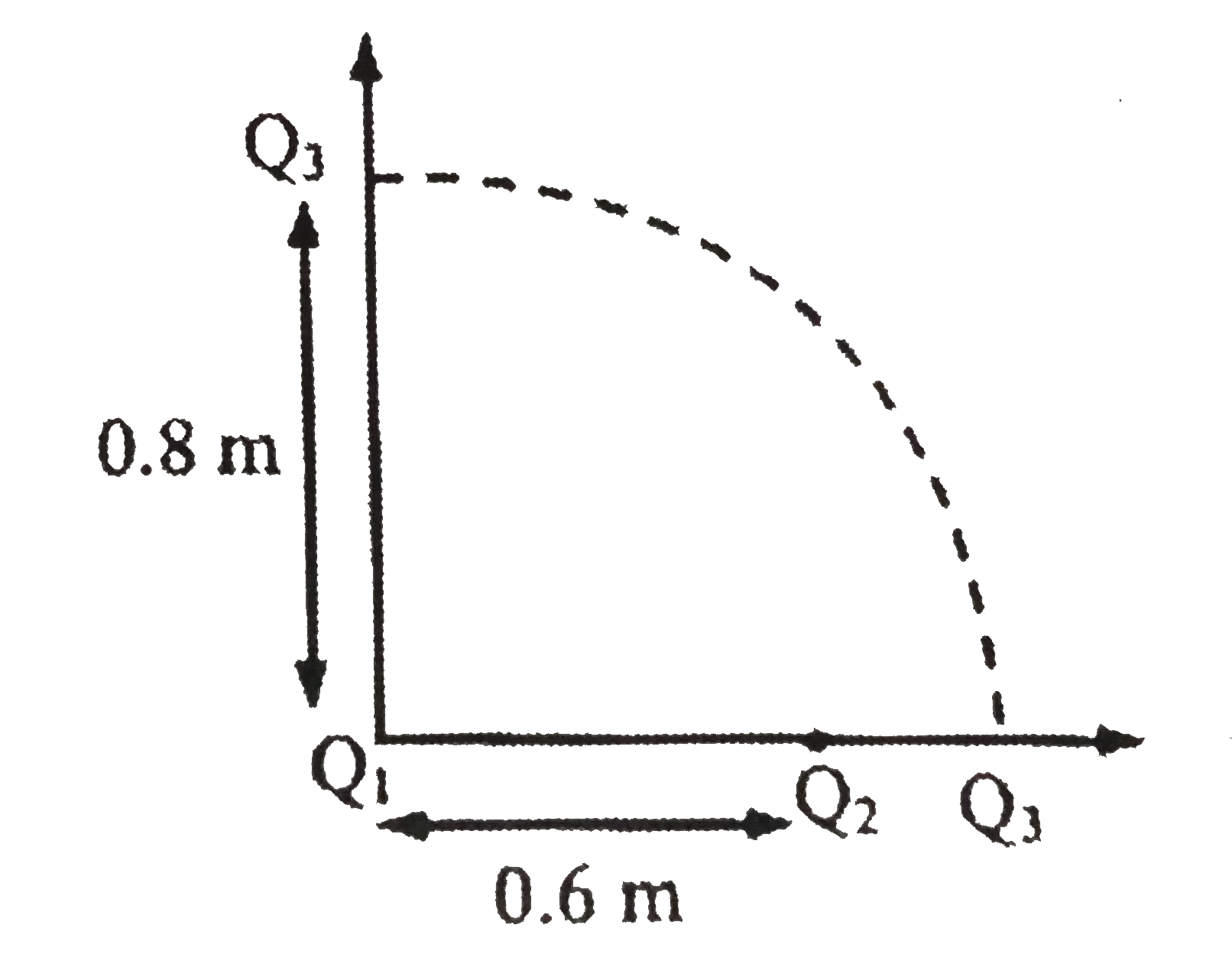
Ui=KQ1Q30.8+KQ2Q3I+KQ1Q20.6
Uf=KQ1Q30.8+KQ2Q30.2+KQ1Q20.6
△U=Uf−Ui=KQ2Q3I−KQ2Q30.2
=KQ2Q3(1−10.2)
|U|=4KQ2Q3
Topper's Solved these Questions
Similar Questions
A charge of 70 A-h (ampere-hours) moves through a potential difference of 25 V. What are (a) the charge in coulombs and (b) the magnitude of the change in the potential energy of the charge?
View SolutionAssertion (A): Three point charges Q1,Q2 and Q3 are shown in the figure. The flux over the Gaussian surface depends on only one charge point.
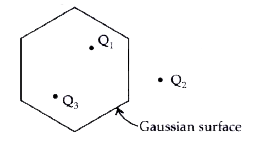
Reason (R): Electric flux depends on the all charges nearby.
View Solution
Knowledge Check
Two charges q1 and q2 are placed 30cm apart, as shown in the figure. A third charge q3 is moved along the arc of a circle of radius 40cm from C to D. The change in the potential energy o fthe system is q34πε0k., where k is
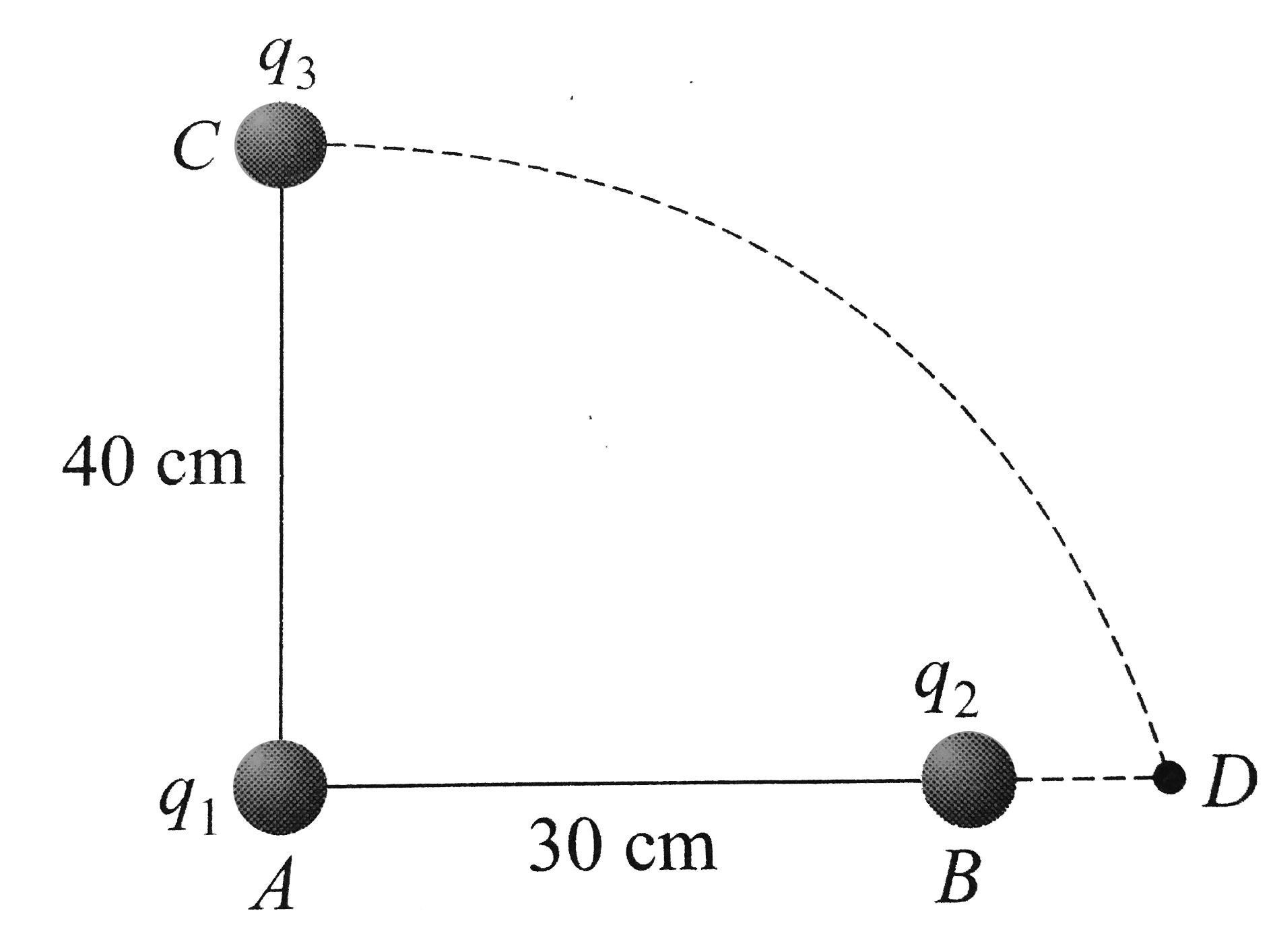 A8q1B8q1C4q1D4q1
A8q1B8q1C4q1D4q1Two charges q1 and q2 are placed 30 cm apart, as shown in the figure. A third charge q, is moved along the arc of a circle of radius 40 cm from C to D. The change in the potential energy of system is kq34πε0, then the value of k is
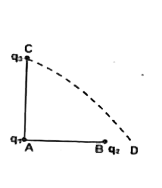 A8q2B8q1C6q2D6q1
A8q2B8q1C6q2D6q1Two charges q1 and q2 are placed 30cm apart, as shown in the figure. A third charge q3 is moved along the arc of a circle of radius 40cm from C to D. The change in the potential energy o fthe system is q34πε0k., where k is
 A8q2B8q1C6q2D6q1
A8q2B8q1C6q2D6q1
The value of charge q1,q2andq3 as shown in the figure are
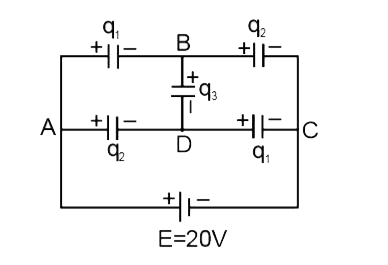
View SolutionA point charge Q is moved along a ciruclar path around another fixed point charge. The work done is zero
View Solution2q and 3q are two charges separated by a distance 12cm on x-axis .A third charge q is placed at 5cm on y−aξs as shown in figure .Find the change in potential energy of the system if 3q is moved from initial position to a point on X−aξs in circular path
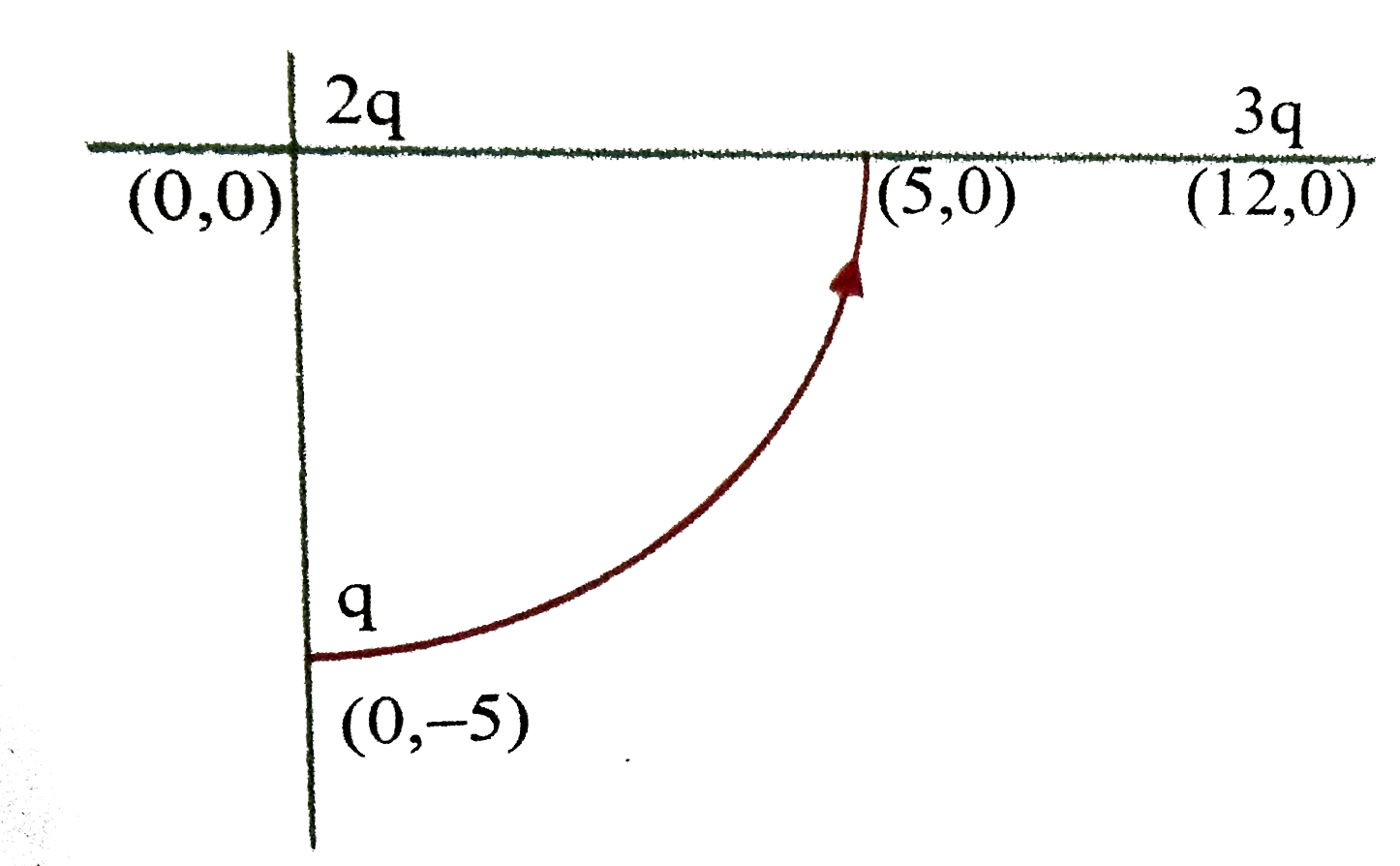
View SolutionA particle of mass m and carrying charge −q1 is moving around a charge +q2 along a circular path of radius r. Period of revolution of the charge −q1 about +q2 is
View SolutionA two point charges 4q and -q are fixed on the x - axis x=−d2andx=d2 , respectively. If a third point charge 'q' is taken from the origin to x = d along the semicircle as shown in the figure, the energy of the charge will

View Solution